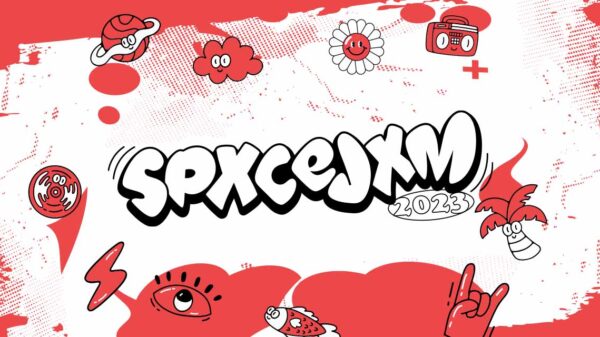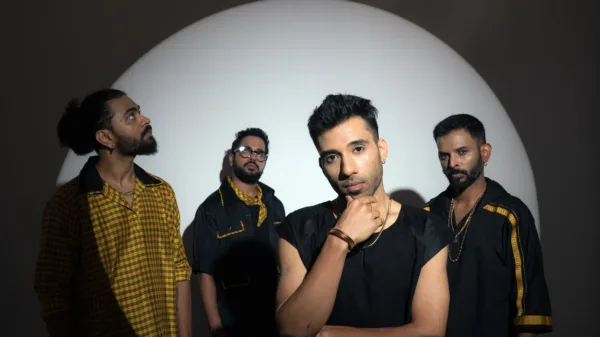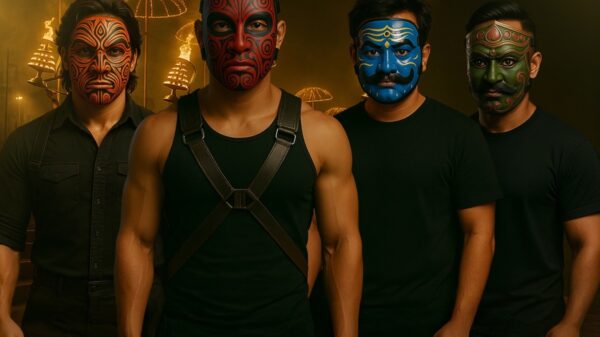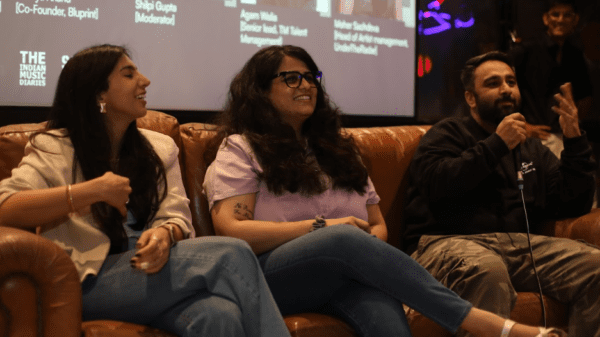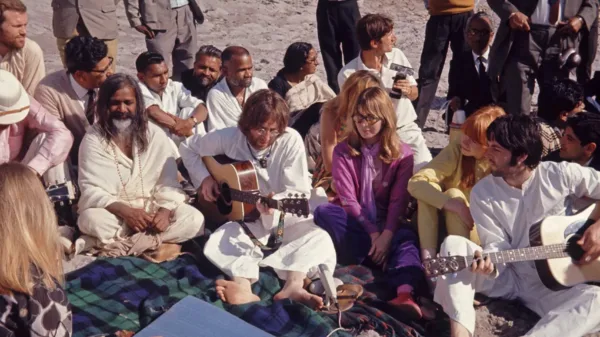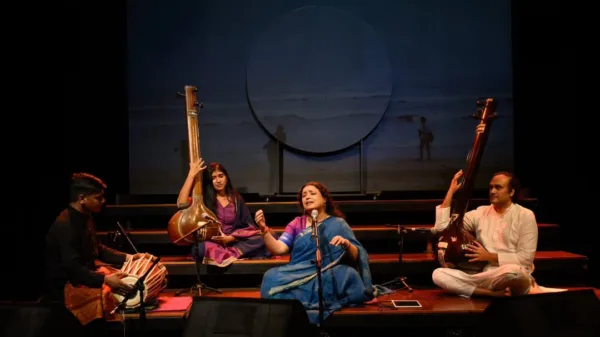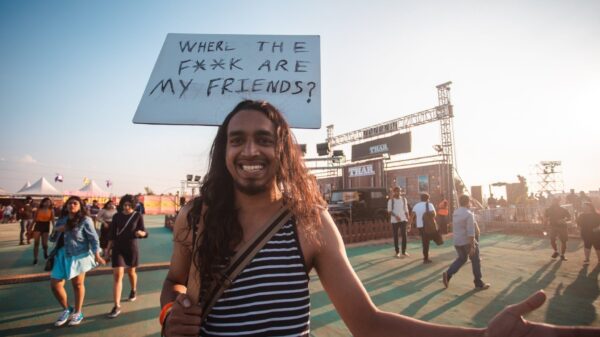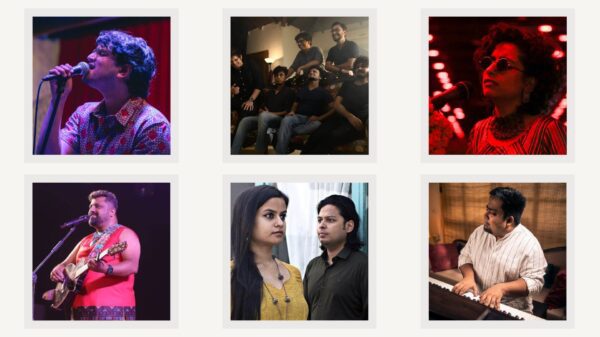The recent hullabaloo surrounds the controversial ethics of artists showing up late to the party! From Lauryn Hill to Ye to Metallica, the terrain of this ‘problem’ never seems to cease expanding. The only amicable aspect of it comes down to the simple fact that we are human—another living creature bound by flaws. Neha Kakkar’s show in Melbourne, Australia, suffered a similar fate, leaving the crowd to decide for themselves. While the commotion and anguish that gilded upon the concert can be accepted, the severe lashing down on various online platforms can be put down to a certain degree.
To insert a very on-the-fence opinion—Neha Kakkar, whose name frequently finds its way in and out of controversies, is not a stranger to this discourse. Some artists seem to build their media following through this type of dissension, which in turn garners the same amount of ‘love’ as well as the opposite of it. And in the end, controversy fuels engagement. Whether intended or not, this incident has once again placed Neha Kakkar in the spotlight. While fans and critics argue over the incident, she has still gained traction in the media, which—one way or another—brings more people to her name.
But while it’s easy to focus on the artist, the real issue often lies in the shadows—within the mechanics of the industry itself. Live shows are not just about the performer; they are massive operations involving multiple layers of management, organizers, venue operators, and ticketing agencies, each taking their share of the profits. The problem? Many of these third-party entities scrape away a significant portion of the revenue while failing to deliver a smooth and professional experience. The fans—who invest time, money, and anticipation—end up suffering, and the artist, being the face of the event, becomes the scapegoat.
The threshold between a musician and a music artist lies in the fans—the consumers of the art, the medium through which the musician connects their soul with the world. Yet, between the ends of this bridge also lies a world divided into a space of dissipated energy, where hate is as strong as love, and some linger in between, riding the thin lines. Like every form of art there is, music is a moral challenge that divides us. How could we ever admire the beauty of disaster, the colors of agony, the smirk behind a smile? Art is a mouthpiece that harnesses both sides of our polarity. Leaving the art aside, there exists a divine connection between the music artist and their listeners. This connection can only truly be felt in a live show, where the crowd witnesses how the artist syncs with their music, and the performer, in turn, sees the emotion their art evokes. That’s where the ‘ethics’ of the artist and everyone with their hands on the show play a part. Showing up early—or, in this case, on time—is considered morally virtuous almost everywhere. And while the crowds may remain divided, the priority should be to honor and cater to those who eagerly await the artist’s performance.
Coming to Neha Kakkar’s show in Melbourne, it can be categorized as an event prone to mistakes—just as we humans are. But when it comes to accountability, the conversation doesn’t just end with the artist. It extends to the managers and organizers—the very people responsible for making sure such an event runs smoothly. This time, they were at fault. The music industry is far from perfect, with countless third parties scraping away funds from the fans while often failing to deliver a seamless experience. A lack of proper accommodations, mismanagement, and logistical failures are all too common, yet it is always the artist who faces the brunt of the backlash.
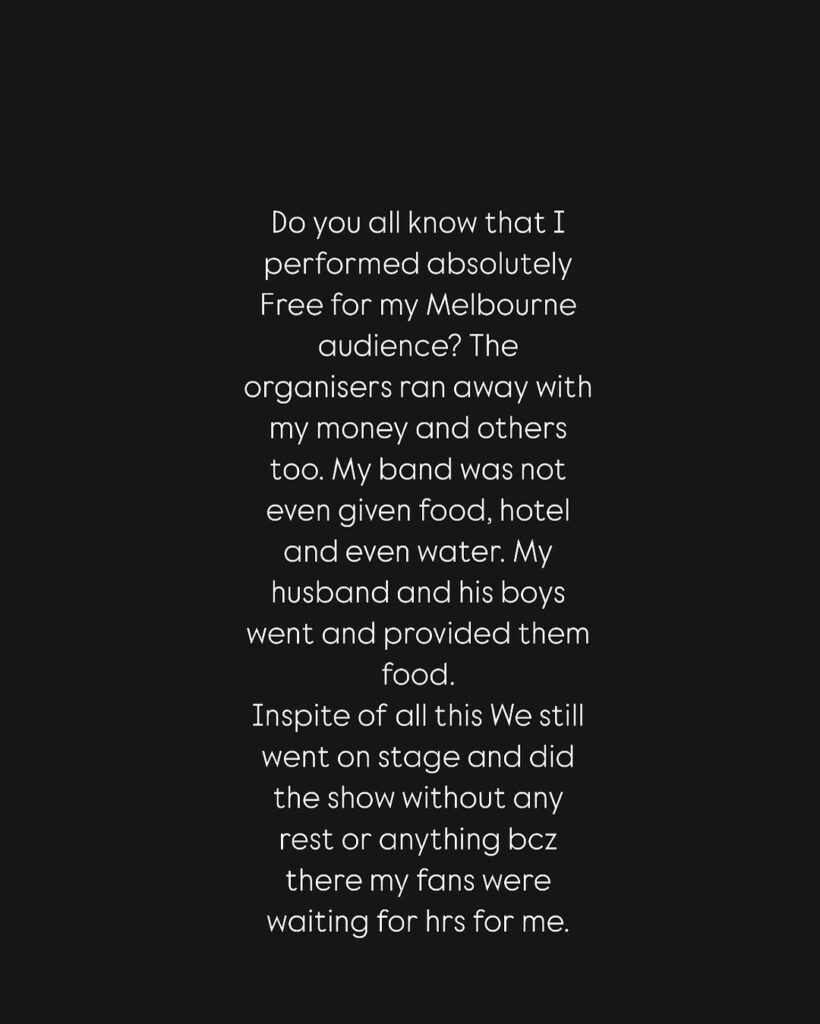

Tony Kakkar, the brother of the performing artist, attempted to dissipate some of the backlash through an Instagram post. In a not-so-cryptic manner, he redirected the frenzy toward the show’s management. According to him, there were no arrangements for accommodation, travel, etc. Although Neha Kakkar’s delay can be blamed on the management and organizers, she took responsibility for her own shortcomings and still performed for those who had come to see her. And in the grand scheme of things, that matters. It may leave a temporary stain on her name, but in a few months, people will forget about it. What remains is the performance itself and the memory that lingers in the minds of those who witnessed it.
The frustration of the concertgoers is also valid. Consider this: in a distant land far away from home, you are waiting for a homegrown artist, anticipating the familiar feeling of belonging, of nostalgia. Standing among thousands of people, you find out that the performer is three hours late! The resulting commotion only amplifies the question of ethics. Everyone there—thousands of them—was on a tight schedule, and wasting people’s time, energy, and money is never considered an asset. As mentioned before, this is a recurring issue worldwide, one that can turn the sweet affections of fans into bitterness. A prime example is Metallica’s 2011 show in Delhi, where the band never even performed, leaving the crowd in outrage and turning them into an embittered mass. Earlier this year also saw Cigarettes After Sex cancelling their Bangalore show, leaving fans disappointed.
This is the side of the music industry that often remains unspoken. It’s an industry that thrives on spectacle, yet is built on a foundation of exploitation. Fans pay for the experience, but the experience is often dictated by forces beyond the artist’s control. Ticketing companies inflate prices with absurd fees, management firms take massive cuts, and logistical failures go unchecked. The artist is merely the face of a much larger machine, and when that machine fails, it is their reputation that takes the hit.
With the dawn of the digital age, the distribution of music has become instantaneous—just like the link between artists and fans. This increased accessibility has stripped away the god-complex surrounding certain artists, reducing them to mere mortals like us. However, in viewing them as equals, we must also consider the fate that intertwines with theirs.
Though I have personally experienced the frustration of changing venues and delayed shows, I cannot fully place myself in the shoes of the performing artist, nor can I see through the exact lens of the concertgoers at Neha Kakkar’s show. There are factors beyond an artist’s control, but that does not erase the disappointment of the audience. Perhaps, instead of focusing solely on blame, we should reflect on the unpredictability of live performances, the flaws in the industry, and the expectations we attach to them.
Because at the end of the day, while the artist bears the criticism, the true culprits continue to thrive behind the scenes, untouched and unaccountable.




